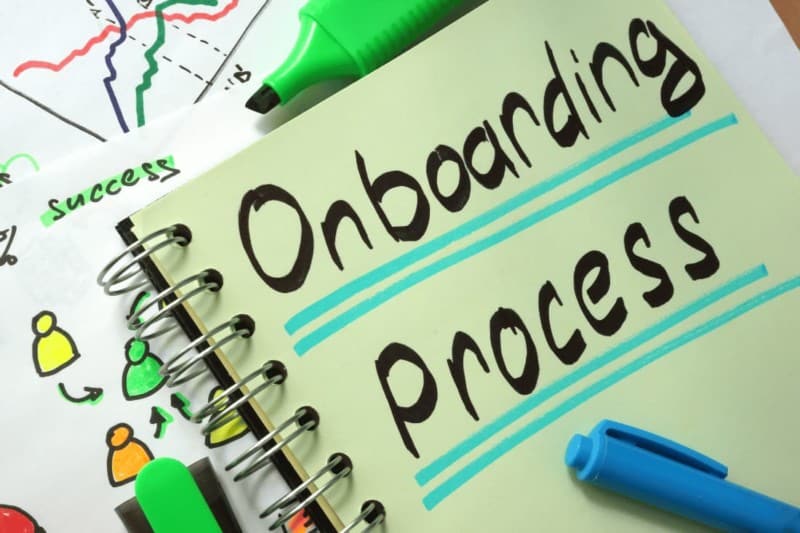The first six months of an employee’s employment are when they are most productive. Hence, during this transition phase, employers can improve, communicate with, and develop relationships with their most recent hires. Onboarding is crucial as remote working dramatically rises. Research shows that within the first two years of employment, 50% of workers voluntarily quit.
There are many potential causes for this, but some of the most frequent ones include poor onboarding, lack of career progression, poor compensation and benefits, and a bad fit.
Employee turnover is expected in today’s workforce, and onboarding is crucial to retention.
According to another study, new hires quite often quit their jobs within the initial six months of being employed because they started to feel unappreciated, overlooked, overworked, and unskilled. Creating a seamless remote onboarding process is essential because it can make a lack of interaction or communication much worse. However, onboarding software like USA staffing onboarding helps you retain staff by providing regular feedback, acknowledgment, rewards, and communication.
Why Does Onboarding Matter?
The best method for a company to keep employees engaged is onboarding. It’s a chance to look into the workplace culture in depth, incorporate support and guidance, teamwork, and ongoing career progression, and give every new hire an excellent beginning. However, today many businesses “establish and overlook” all this. They create new hire training but only reassess it when company policy shifts. Changing how you approach onboarding by being unique can be a game-changer if your goal is to boost retention during the first six months of your new hires’ employment.
How To Create A Seamless Onboarding To Retain Top Talent?
Make ongoing onboarding the new benchmark:
You must augment your employee recruitment and hiring process over 90 days if you want to involve and keep skilled remote workers. In the past, new hires have been treated as silent attendees in a one- or two-day orientation, with onboarding being viewed as an event rather than a process. They connect with their supervisor, learn about rules and procedures, and sign a lot of paperwork. No employee will ever feel left behind or poorly prepared after onboarding wraps up by modifying it from a limited period during which the checklist is ticked off to an ongoing process.
Ongoing onboarding:
Continuous onboarding is crucial for keeping employees on board. It is a prolonged, ongoing discussion with your onboarding team. You can establish benchmarks for community engagement, mentorships, feedback, and training programs that can be incorporated into a career advancement strategy. Furthermore, It is said that longer onboarding programs are linked to the improved talent and business outcomes like performance management, employer prestige, percentage of diversified hires, and top-notch recruits.
Creating lasting relationships.
Building relationships and trust within your team and frequently interacting with your new employees are key to increasing remote employee retention. An ongoing line of communication can give new employees the impression that their viewpoints are being heard, understood, and considered.

Measures of Feedback
When working remotely, especially, staff members need clear processes, structured activities, and processes to feel like a part of the team. Consider using other communication channels, such as virtual discussion rooms or virtual focus groups, along with sending anonymous feedback forms and survey questionnaires to all new hires at prescribed times during their first six months. Use online surveys and one-on-one conversations, and forgo meetings frequently to get feedback.
Developing a unique experience
You can design an onboarding experience that feels individualized, speaks to smaller teams of employees, and empowers instant feedback and Q&A early on. Prolonging onboarding means that your new remote recruits will devote more time online with their hiring team and manager in their first few days and weeks of employment as compared to combining onboarding activities into a one, two, or three-day training. For instance, on day one, there might be a time for questions and an introduction from HR.
Make hiring managers aware.
Your virtual onboarding can be similar to an in-person experience regarding constant communication and feedback loops. However, teaching supervisors the value of allocating time for one-on-one conferences with fellow employees is crucial. Make sure each hiring manager has daily time allotted for recruits.
Bottom Line
Rethinking remote and virtual onboarding is now essential to ensuring employee retention. You must be able to evaluate whether a program or procedure is benefiting your employees, just like you would with any other company guidelines or policies. It’s important to review your onboarding procedures from time to time, not just when there are significant changes but also when retention rates aren’t as high as they could be.
If a significant portion of your employees leaves before the six-month mark, there may have been a missed attempt to interact, connect, or converse during onboarding. However, using onboarding software to make your onboarding seamless can be extremely helpful.



